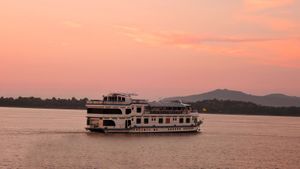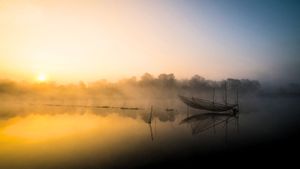The Pobitora Wildlife Sanctuary is a hidden gem in the region of Assam, India. It is a popular wildlife sanctuary in Assam which is a tourist favourite. It is situated in the Morigaon district of Assam, close to Guwahati city. The Pobitora Wildlife Sanctuary is popularly known for its sizable one-horned rhinoceros population and is one of the most visited tourist spots in India.
It was declared a reserve forest in 1971 and later in 1987 as a wildlife sanctuary. As per the latest census report, Pobitora Wildlife Sanctuary is home to 102 rhinoceros. The sanctuary is spread over 38.8 sqkm and shares a boundary with 27 neighbouring villages.
Things to see in Pobitora Wildlife Sanctuary
PW 1 One-Horned Rhino And Migratory Birds at Pobitora Wildlife Sanctuary
The Sanctuary is surrounded by the majestic Brahmaputra river on the north, and Garanga Beel on the south. It is surrounded by 27 local villages with zero human population! The sanctuary, to date, has seen the sighting of 7161 visitors.
In case you are visiting this beautiful place anytime soon, here are a few things that you must see:
1. Rich wildlife

We all know that the one-horned rhinoceros is the prime attraction of this sanctuary. The grassland vegetation of this place makes for the perfect home for this species. But besides the rhinoceros, the other wildlife species here include the leopard, wild boar, barking deer, jungle fowl, civet cats, wild bears, Asiatic wild water buffaloes, and so much more.
Elephant and jeep safaris are the two major activities for tourists at the Pobitora Wildlife Sanctuary. The elephant and jeep safari lasts between 90 minutes to 120 minutes.
2. Birding
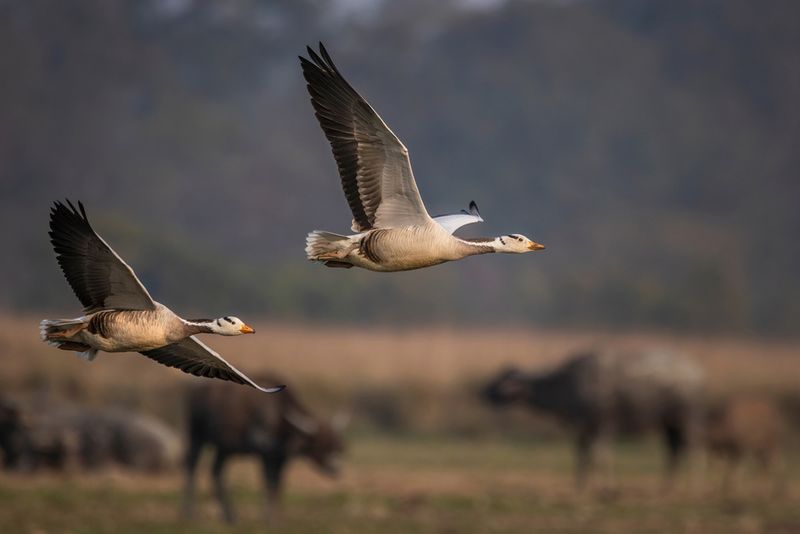
During the winter season, the state of Assam becomes home to thousands of migratory birds who settle in the protected forest reserves and water bodies. From the lesser whistling teal and the black-necked stork to the red-wattled lapwing and little egret, the Pobitora Wildlife Sanctuary houses 2000 resident birds and migratory birds of 375 such species. For this reason, this sanctuary is also known as the Bharatpur of the East. It attracts a lot of birdwatchers from all over the world.
3. Flora and fauna
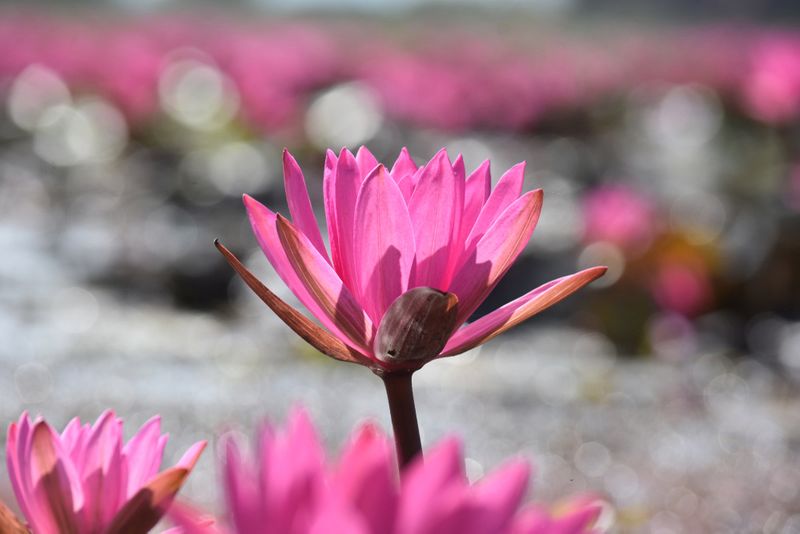
The Pobitora Wildlife Sanctuary is also a UNESCO World Heritage site, famous for its rare and endangered species of flora, fauna and avifauna.
4. Haduk Hanging Bridge
This bridge, which is located right opposite the entrance of Pobitora Wildlife Sanctuary, looks like a miniature version of the famous Howrah bridge of Kolkata. With the backdrop of the lush green forest and a tranquil lake, it makes for the perfect photography spot.
Tourists are often spotted on this bridge taking selfies.
5. Garanga Beel
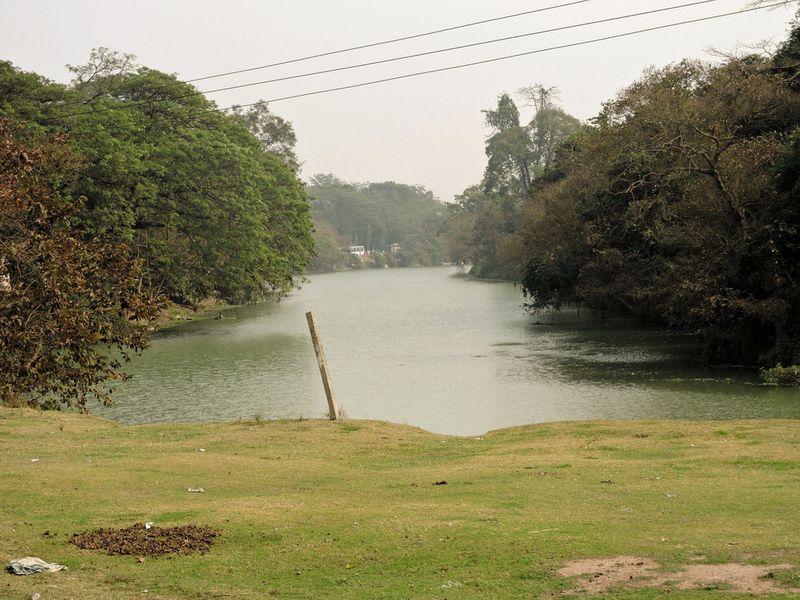
In the Assamese language, beel means a lake or a pond. The scenic Haduk Hanging Bridge is built on this Garanga Beel. When you come here, you will find a lot of waterfowl like ducks and geese swimming around the lake. The Garanga Beel is rich in fish and aquatic vegetation that attracts a lot of birds, namely pond herons and egrets.
6. Spotting dolphins
The Pobitora Wildlife Sanctuary is home to a lot of river dolphins and offers boat rides to see their sightings.
Best time to visit Pobitora Wildlife Sanctuary

This famous wildlife sanctuary in Assam is generally open to visitors from mid-October to mid-May. During this time, it also witnesses the sight of migratory birds flocking here. In June, the rainy or monsoon season officially begins in Assam thereby inundating the area.
During the month of October, one is able to experience the temperature becoming favourable. Even the temperature of the waters in the interiors of the Pobitora Wildlife Sanctuary reduces during this time and by mid-October officially, the place is reopened for visitors.
The best time to visit Pobitora Wildlife Sanctuary is from November to April. The climate at Pobitora Wildlife Sanctuary is sub-tropical monsoon.
How to reach the Pobitora Wildlife Sanctuary

It is located at a distance of 40 km from Guwahati city at Narengi and Noonmati. There is public transportation available, of state-run buses that regularly ply from Guwahati to Mayong village, where the sanctuary is situated.
By air
The best way to reach Pobitora Wildlife Sanctuary is from the Guwahati Airport. The distance is about 62 km.
By rail
The nearest railway station is the Jagiroad Railway Station, at a distance of approximately 31 km.
Places to stay in Pobitora Wildlife Sanctuary
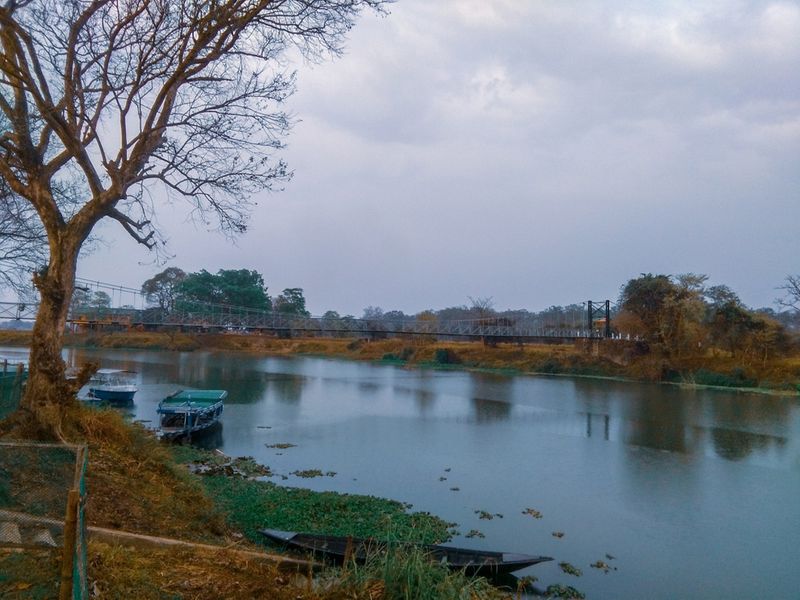
In case you are planning a visit to the Pobitora Wildlife Sanctuary, consider choosing the eco-resorts located near the same. You have to plan and book well in advance, especially if you are planning to go around the bird-watching season.
The Zizina Otis Resort is one of the best resorts to stay here. It is away from the hustle and bustle of the city and is in the middle of some forestland. It comprises mud houses and tented rooms. The Zizina Otis Resort offers a serene environment along with a tranquil ambience. Another alternative is the Arya Eco Resort and the Aroohan Serenity Resort.
The third option for stay is right in Guwahati as it is not very far from Pobitora Wildlife Sanctuary. There are multiple options to choose from.
Nearby places to visit in Pobitora Wildlife Sanctuary
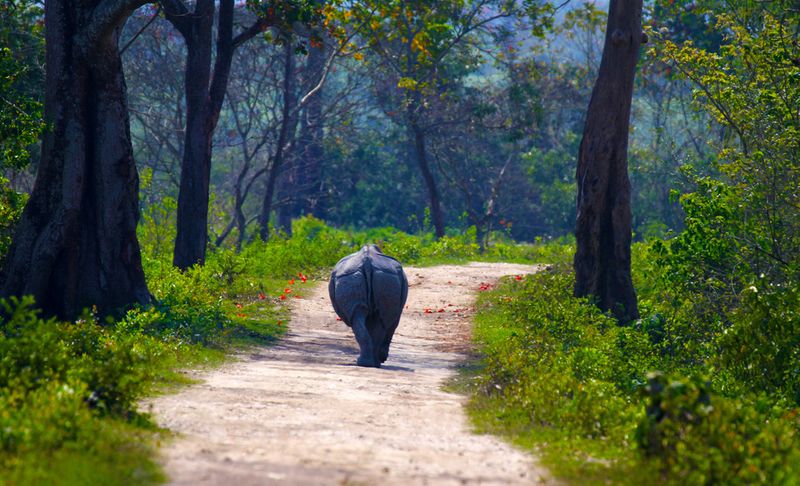
If you are planning to visit Pobitora Wildlife Sanctuary, you must also take out time to visit nearby places. Kaziranga National Park, which is located 3.5 hours away, is accessible as well.
The Kaziranga National Park is famous for housing the world’s great one-horned rhinoceros and the rare swamp eastern deer. It is also home to 478 distinct bird species like Blyth’s kingfisher, white-bellied heron and black-bellied tern. In fact, it is also one of the national parks that got the status of tiger reserve in 2006.
Another place to visit is the city of Shillong. You can even opt for a quick visit to the Mayong village, a few kilometres away from the sanctuary. It is called the land of black magic and sorcery.
Apart from the above, you can also pay a visit to Majuli, a river island in the Brahmaputra River. You must also opt for the Brahmaputra river cruise if you visit Majuli.
Permits and booking safaris
You need to buy the forest permit at the main entrance of the sanctuary, available at Rs 50 per person. Both the forest permits and safari jeeps are booked separately here.
One jeep can accommodate around six people and costs Rs 1300 per person. It can be booked throughout the day from 6:30 am to 3 pm whereas the elephant safari costs around Rs 500 per person, and can be booked only in the morning hours.
To go on the elephant safari, you have to walk across the Haduk Hanging Bridge.
Disclaimer: The details mentioned throughout this blog are sourced from publicly accessible platforms. At Zeezest, we intend to share factual and verified information. Should there be any inconsistencies or variances in the information provided, please understand that these are entirely unintentional and not meant to mislead.



